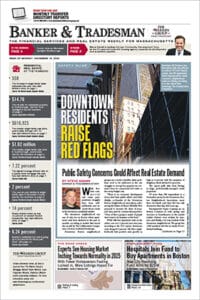The year 2007 is shaping up to be a pivotal one for property insurance companies and reinsurance firms on the East Coast. What turned out to be an absence of forecasted major storms in 2006 could herald a continuation of lower rates for risks located greater than one mile to five miles from the coast. An active hurricane season would fuel concern and likely will result in firm or increased rates for all property owners regardless of their location.
As it now stands, the National Oceanic and Atmospheric Administration’s (NOAA) prediction is for an “above normal” 2007 Atlantic hurricane season of 13 to 17 named storms with a 10-year forecast for a double-digit number of significant storms that could result in $100 billion dollars in losses. All it would take is one Category 5 hurricane with winds exceeding 155 miles per hour to hit portions of the East Coast for that overwhelming loss figure to be realized.
Let’s take a look at the facts. Seven of the most costly storms in terms of insured losses have occurred over the past few years whereas insurance companies previously expected a major catastrophe every 100 years. Compounding this alarming situation are rapid coastal development and escalating property values, creating a “perfect storm” for catastrophic insurance claims. Data indicates that Florida and New York presently lead the way in catastrophic claims with potential insured coastal property losses at more than $1.9 trillion each.
The property casualty industry in four of the past six years had combined loss ratios in excess of 100 percent. While 2006 was a record year for profits, 2007 will likely have deteriorating results because of the soft property market conditions that currently exist in spite of the forecasts for an active hurricane season.
The trickle-down effect of high-priced claims quickly reaches reinsurers – firms that act as an insurance company’s insurer. Reinsurance companies absorb monetary risks that exceed the company’s capacity. Therefore, a large portion of catastrophic risks end up with reinsurers, resulting in highly volatile reinsurance premiums. Reinsurance costs for some companies have increased almost 40 percent in recent years.
For the catastrophic insurance market (including properties along the East Coast), these are days of uncertainty, despite the relatively mild 2006 hurricane season, when reinsurers were able to relax to some degree and see record profits. But was 2006 the calm before the storm? That’s the question on every insurer/reinsurers’ lips.
Without question, the insurance industry has raised awareness of climate change and its impact on risk modeling and risk management. Should the number of natural disasters continue to climb, catastrophic insurance will not only become more expensive but also more difficult to obtain.
So, how can insurance companies and reinsurers “weather” the impending storms of this season and those on the horizon? In much the same way as meteorologists make their forecasts – through the use of technology.
Insurers now are capable of assessing risk with catastrophic modeling and risk decision geographic information systems technologies in addition to upgraded property and catastrophic data management.
The need for increased investment in catastrophic, or CAT, modeling software and geo-information systems became glaringly apparent following the devastating effects of hurricanes Katrina and Rita. Through the use of CAT modeling, insurers and reinsurers are better able to predict losses from storms and take into consideration global warming and the seven major storms that have occurred in a few short years.
But despite forecasts of a heavy hurricane season in 2007 and longer term predictions for catastrophic weather owing to changes in the world climate, the building boom – residential, commercial, retail and industrial – in coastal America and the East Coast in particular continues. Increased development equals amplified property values, a natural segue to higher insurance rates.
It’s difficult to ignore all the doom and gloom from the experts – almost as difficult as it is to deny the very real need to stabilize pricing so that residential and commercial property owners do not experience dramatic increases when a major event hits. But in spite of it all most insurance companies have been reducing property premiums since January 2007. Even properties near or on the coast have seen a reduction in their premiums upon renewal. However, for coastal property risks, there has been a dramatic increase in deductibles for losses that are wind or water related. One can expect anywhere from a 2 percent to 5 percent deductible for these types of losses with minimum deductibles of $25,000 to $100,000 of the property values.
What it all comes down to is this: If the conditions are right for catastrophe to strike, everyone is affected – insurance companies, reinsurers and most importantly both private and commercial property owners, who not only end up paying higher rates to cover reinsurers’ increases on their contracts with insurance companies but who must also endure the chaos and destruction of Mother Nature’s path.






